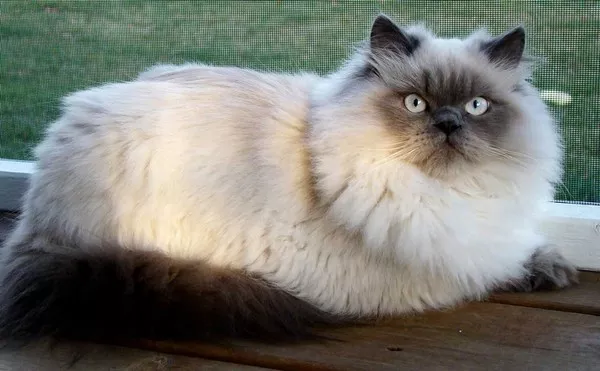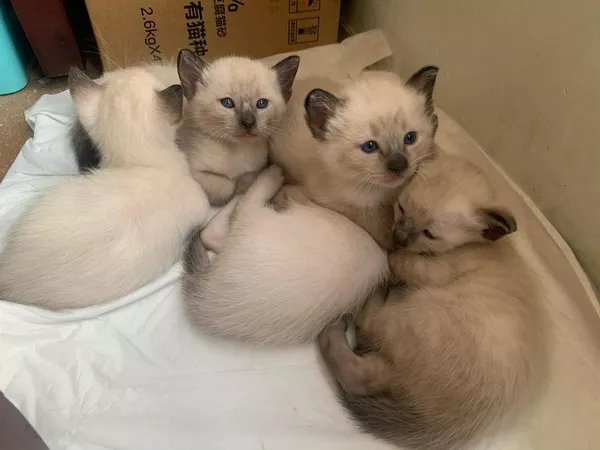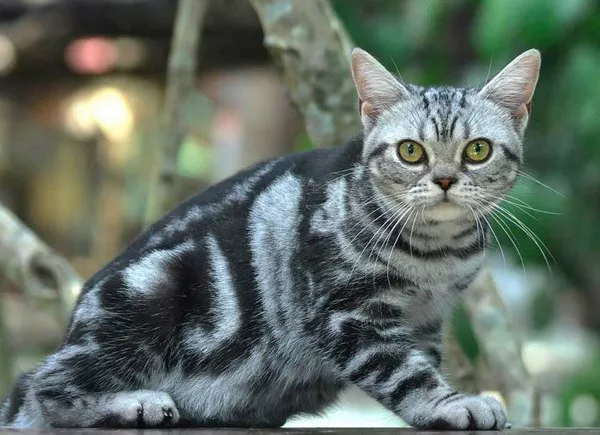Cats have been beloved companions to humans for centuries, offering affection, companionship, and a unique sense of joy. Among the various cat breeds, Himalayan cats, known for their striking appearance and sweet temperament, stand out as a popular choice for many cat lovers. But how long do Himalayan cats live? In this comprehensive article, we will explore the factors that contribute to the longevity of Himalayan cats, their average lifespan, and essential tips for ensuring a long and healthy life for your feline friend.
The Average Lifespan of Himalayan Cats
Himalayan cats, often referred to as “Himmies,” are a breed known for their Persian-like appearance, characterized by a luxurious long coat, striking color points, and large expressive eyes. These cats are a delightful combination of both the Siamese and Persian breeds, creating a unique and endearing personality.
The average lifespan of a Himalayan cat typically ranges from 12 to 15 years. However, with proper care and attention to their specific needs, some Himalayan cats have been known to live well into their late teens or even early twenties. Several factors contribute to their longevity, and understanding these factors can help you ensure a happy and healthy life for your beloved Himalayan companion.
Factors That Influence the Longevity of Himalayan Cats
The lifespan of a Himalayan cat can be influenced by various factors, including genetics, diet, environment, healthcare, and lifestyle. Here’s a closer look at how each of these factors contributes to their longevity:
1. Genetics: Genetics plays a significant role in a cat’s lifespan. Himalayan cats with a strong genetic lineage of healthy parents are more likely to live longer, healthier lives. Responsible breeders often prioritize the health and well-being of their breeding cats to produce robust kittens.
2. Diet and Nutrition: Proper nutrition is crucial for a Himalayan cat’s overall health and longevity. Feeding your cat a high-quality cat food that meets their specific dietary needs is essential. Himalayan cats may be prone to dental issues due to their brachycephalic (flat-faced) structure, so regular dental care is also important.
3. Environment: Creating a safe and stimulating environment for your Himalayan cat is vital. Ensure they have a comfortable living space, free from hazards. Providing opportunities for mental and physical stimulation through toys, scratching posts, and interactive play sessions can contribute to their overall well-being.
4. Healthcare: Regular veterinary check-ups are essential for early detection and prevention of health issues. Himalayan cats may be susceptible to certain breed-specific health concerns, such as respiratory issues due to their flat faces. Routine vaccinations, parasite control, and dental care should also be part of their healthcare regimen.
5. Grooming: Himalayan cats have long, luxurious coats that require regular grooming. Brushing their fur daily helps prevent matting and hairballs, which can be a concern in long-haired breeds. Keeping their coat clean and free of tangles contributes to their comfort and overall health.
6. Lifestyle:
Himalayan cats are generally calm and affectionate, making them well-suited to indoor living. Keeping your cat indoors can protect them from outdoor dangers such as traffic, predators, and diseases. Indoor cats typically have longer lifespans than outdoor cats.
7. Weight Management: Maintaining a healthy weight is crucial for your Himalayan cat’s longevity. Obesity can lead to a range of health problems, including diabetes and joint issues. Monitor your cat’s weight and consult with your veterinarian for guidance on proper portion control and exercise.
8. Stress Reduction: Minimizing stress in your cat’s life can also contribute to a longer and healthier lifespan. Himalayan cats thrive on routine and consistency, so providing a stable and loving home environment is essential.
Common Health Issues in Himalayan Cats
While Himalayan cats are generally healthy, they may be prone to certain breed-specific health concerns. It’s important to be aware of these issues and work closely with your veterinarian to manage and prevent them:
1. Brachycephalic Syndrome: Himalayan cats have a flat facial structure, which can lead to respiratory issues such as brachycephalic airway syndrome. Symptoms may include snoring, noisy breathing, and difficulty breathing, especially in hot weather.
2. Dental Problems: Due to their brachycephalic features, Himalayan cats may be more susceptible to dental issues, including tooth overcrowding and gum disease. Regular dental care, including professional cleanings, can help prevent these problems.
3. Polycystic Kidney Disease (PKD): PKD is a genetic condition that can affect some Himalayan cats. Regular veterinary check-ups and genetic testing can help identify and manage this condition.
4. Obesity: Himalayan cats can be prone to obesity if not carefully managed. Obesity can lead to various health problems, including diabetes and arthritis.
5. Eye Problems: Their large, expressive eyes can be prone to certain eye conditions, such as tear staining and entropion (a condition where the eyelids roll inward). Regular eye care and cleaning can help prevent these issues.
Tips for Ensuring a Long and Healthy Life for Your Himalayan Cat
To maximize the lifespan of your Himalayan cat and ensure they enjoy a happy and healthy life, consider these essential tips:
1. Regular Veterinary Care: Schedule annual check-ups with your veterinarian to monitor your cat’s health and detect any potential issues early.
2. Maintain a Healthy Diet: Feed your Himalayan cat a balanced and nutritious diet tailored to their age, activity level, and specific dietary needs.
3. Grooming: Brush your cat’s coat daily to prevent matting and hairballs. Check their eyes and ears regularly and keep them clean.
4. Weight Management: Monitor your cat’s weight and adjust their diet as needed to maintain a healthy weight.
5. Dental Care: Implement a dental care routine, including regular brushing and professional cleanings, to prevent dental issues.
6. Provide Mental and Physical Stimulation: Engage your Himalayan cat in play and exercise to keep them mentally and physically active.
7. Create a Safe and Stress-Free Environment: Minimize stressors in your cat’s life by providing a stable and loving home environment.
8. Stay Informed: Educate yourself about breed-specific health concerns and consult with your veterinarian about any questions or concerns you may have.
In Conclusion
Himalayan cats are known for their striking beauty and affectionate nature, making them cherished companions for cat lovers worldwide. While their average lifespan typically ranges from 12 to 15 years, with proper care and attention to their specific needs, Himalayan cats can live even longer, healthier lives. By following essential tips for their care and addressing breed-specific health concerns, you can ensure that your Himalayan cat enjoys a long and happy life as a beloved member of your family.


























